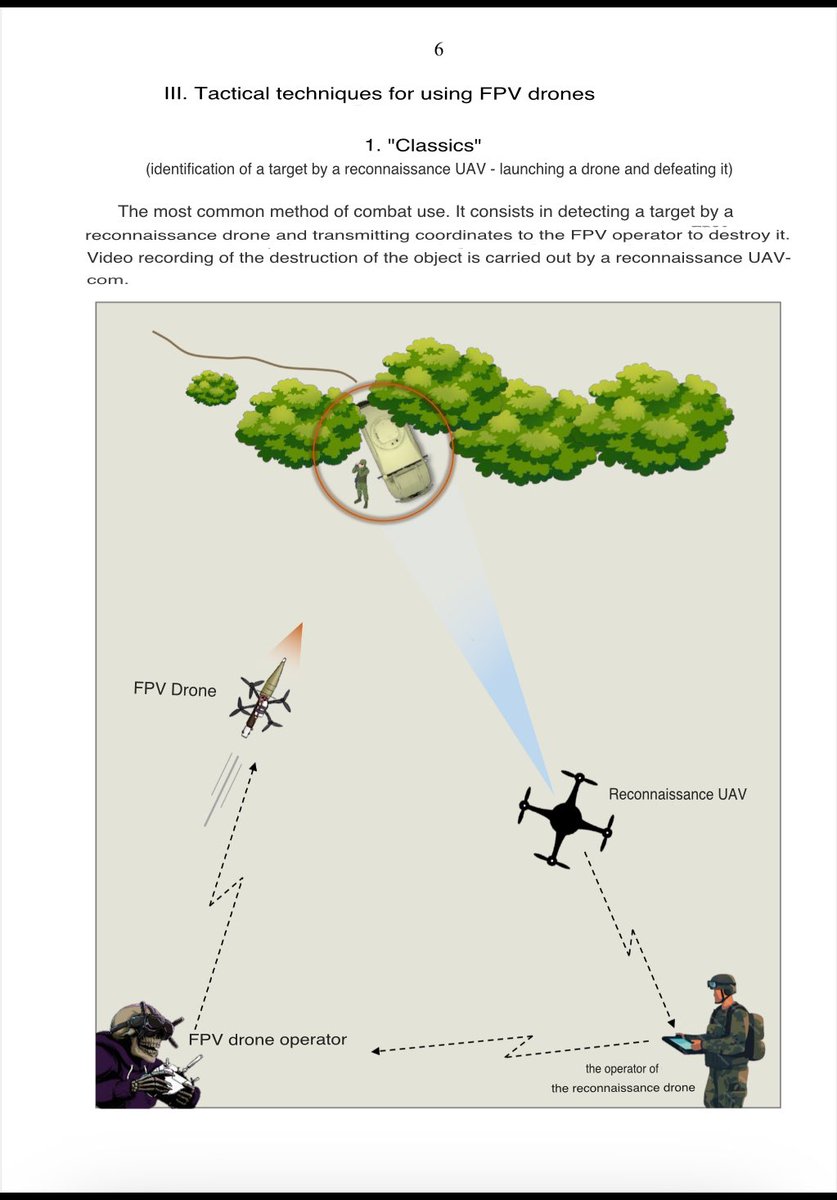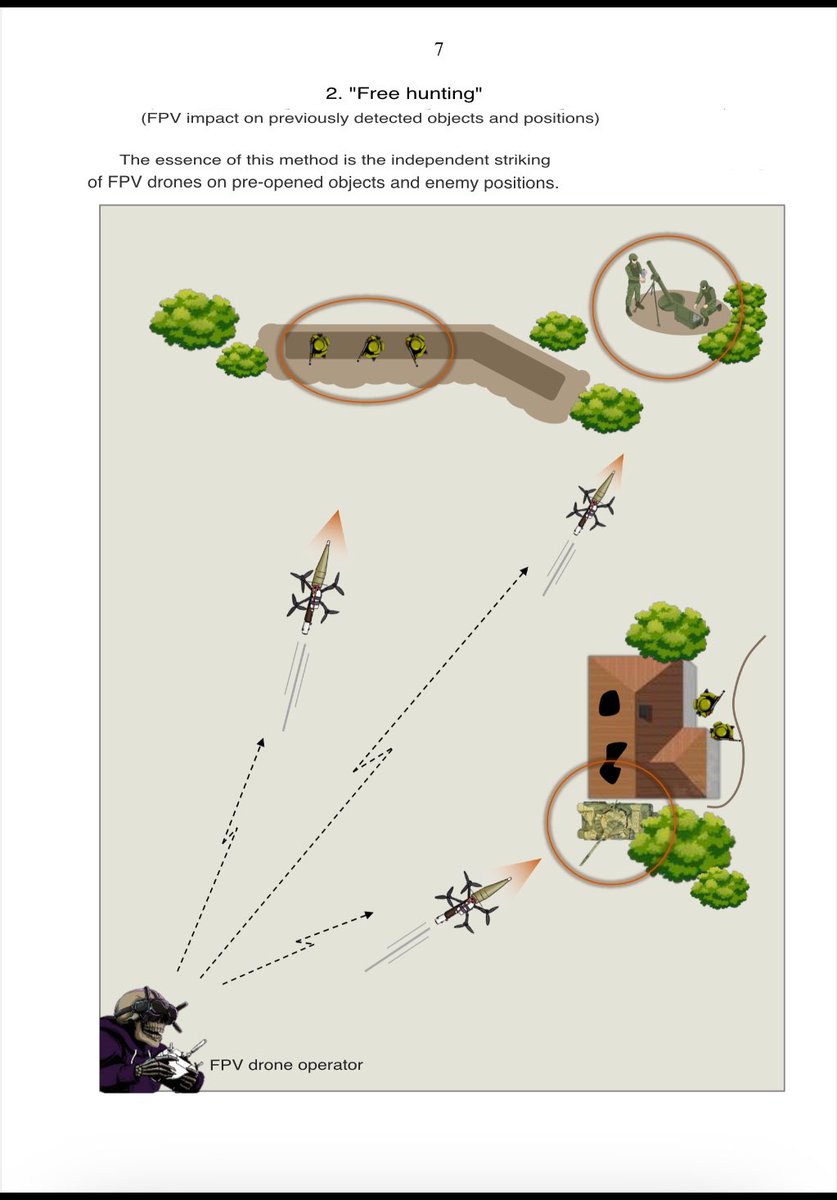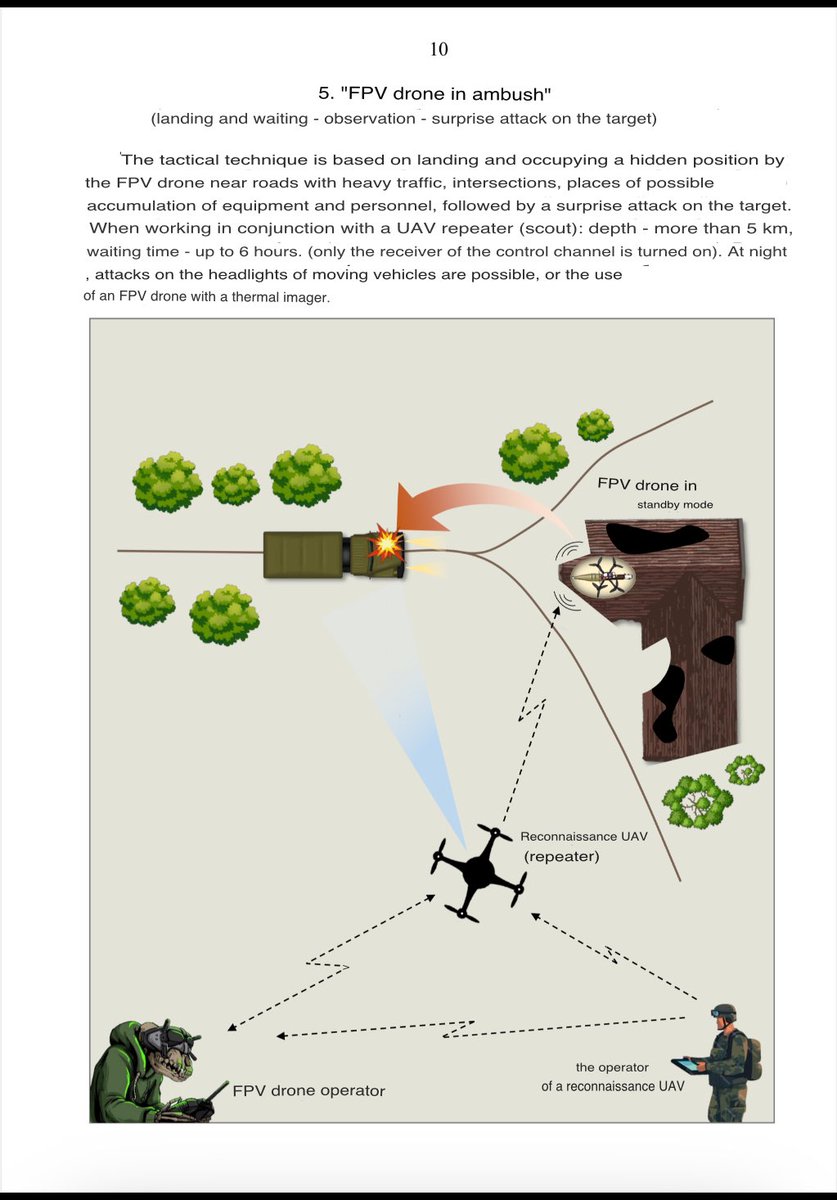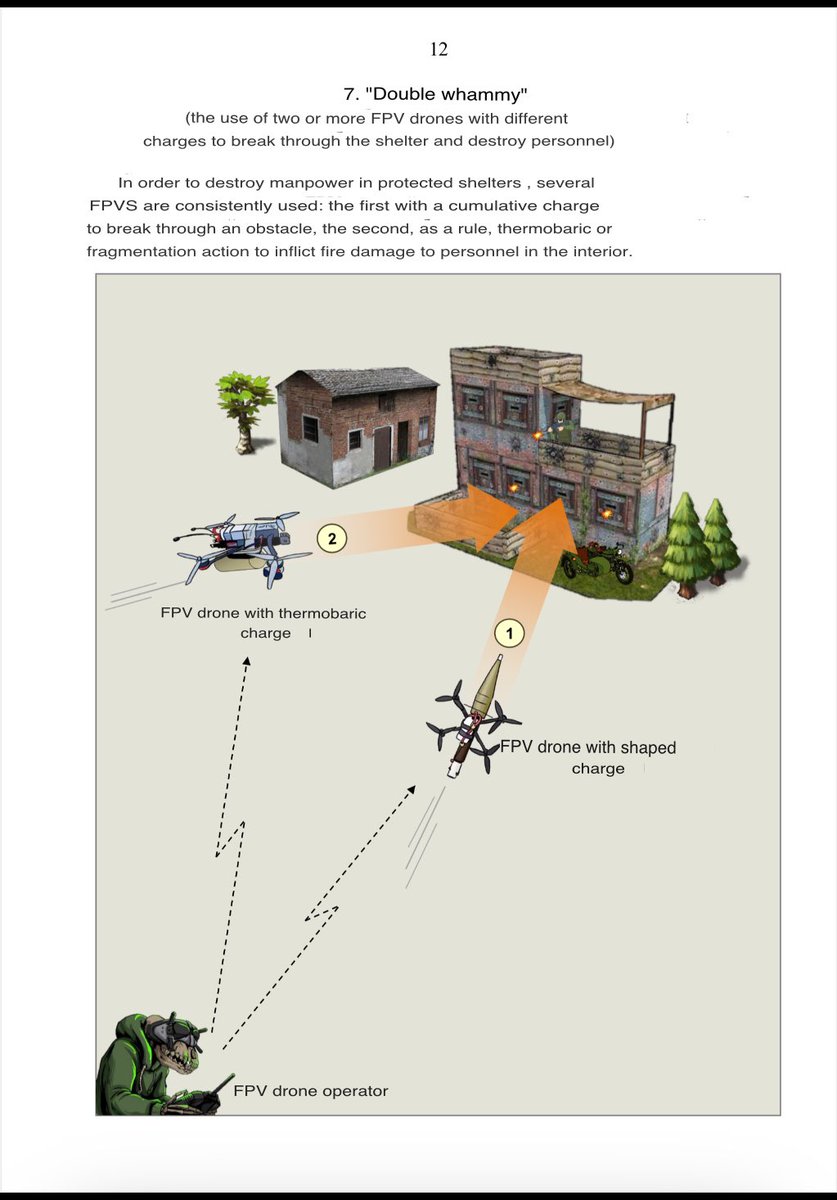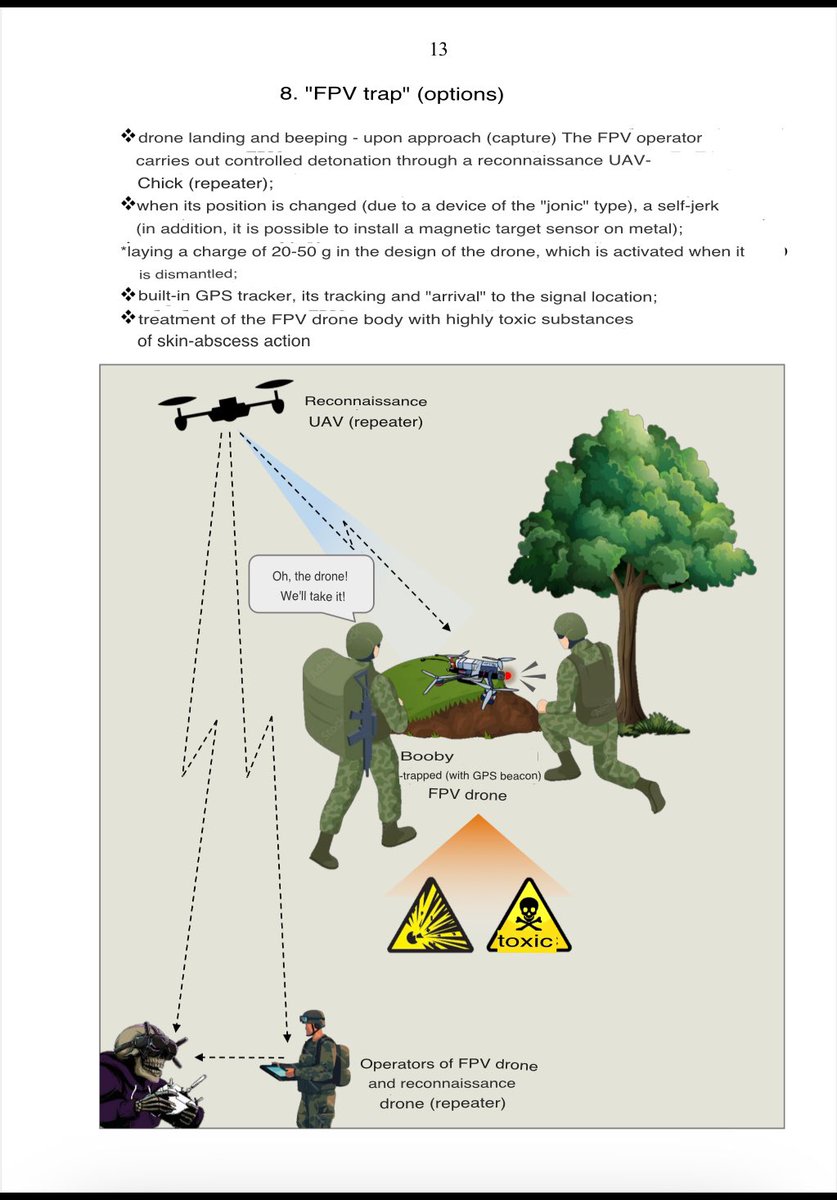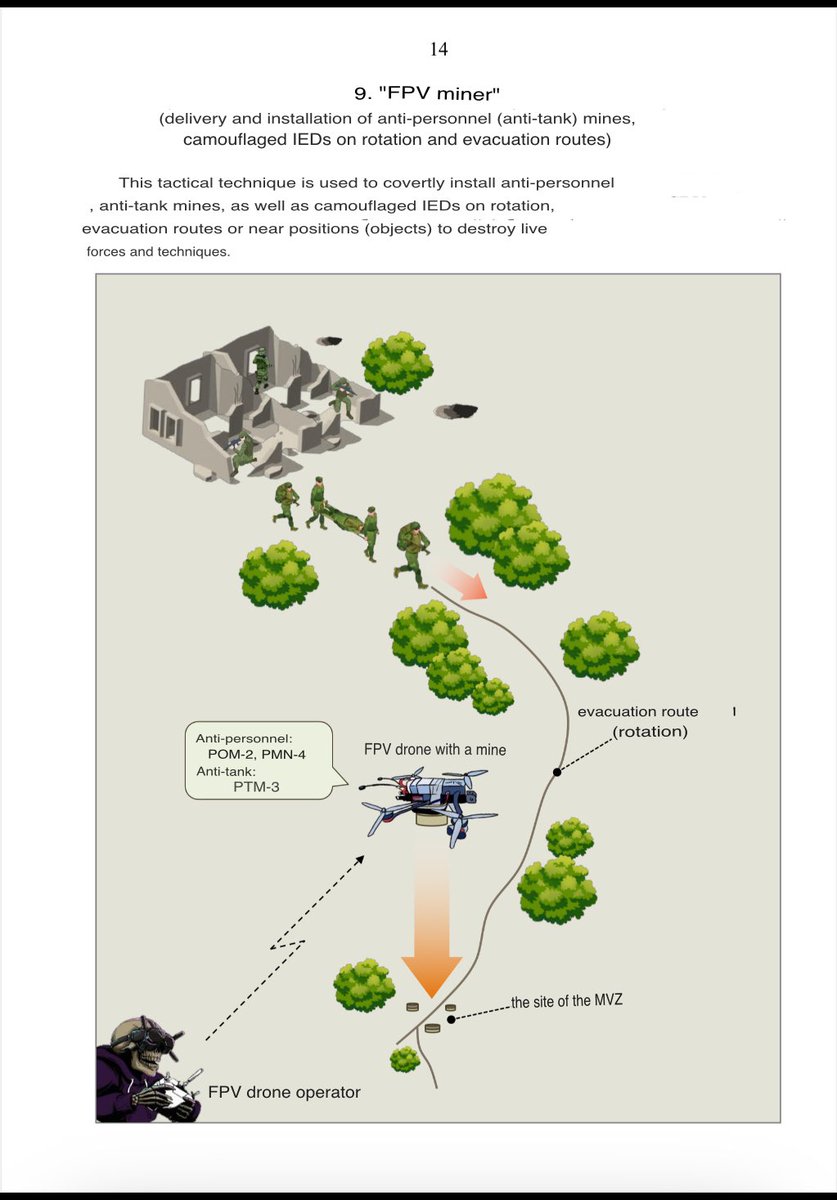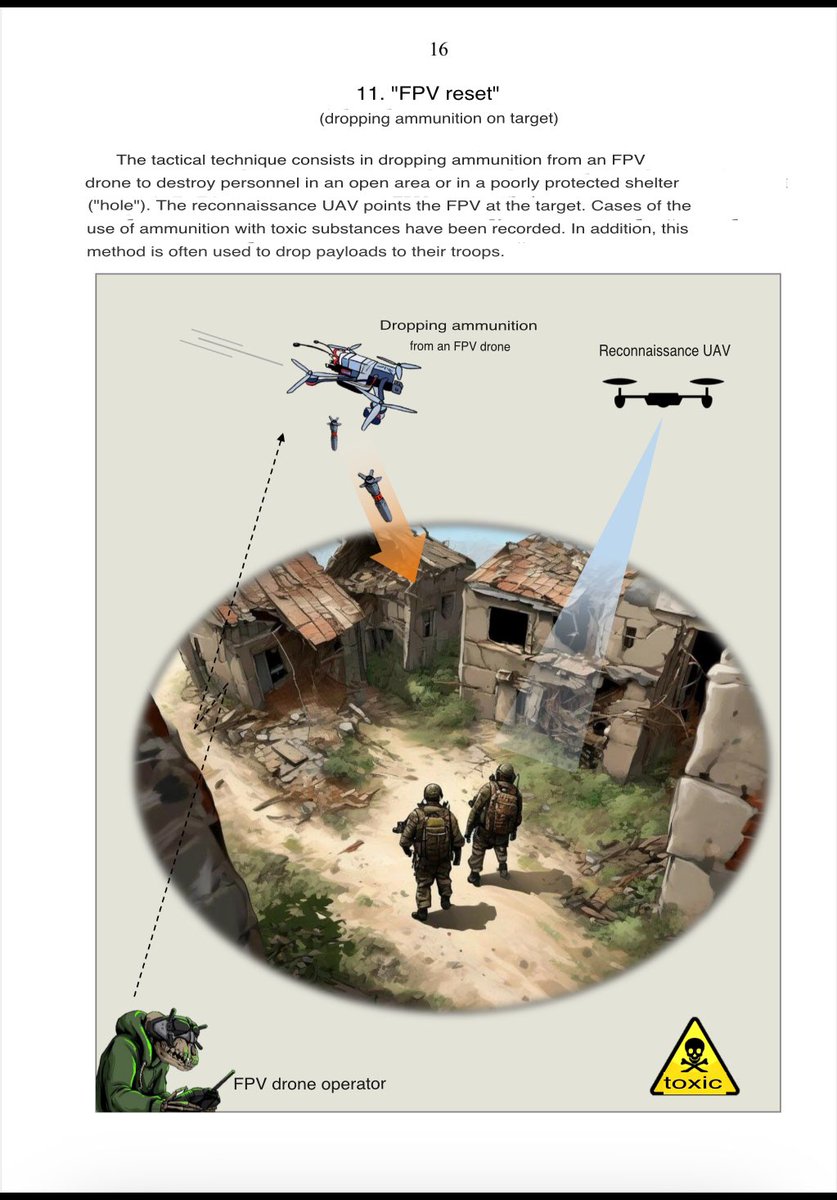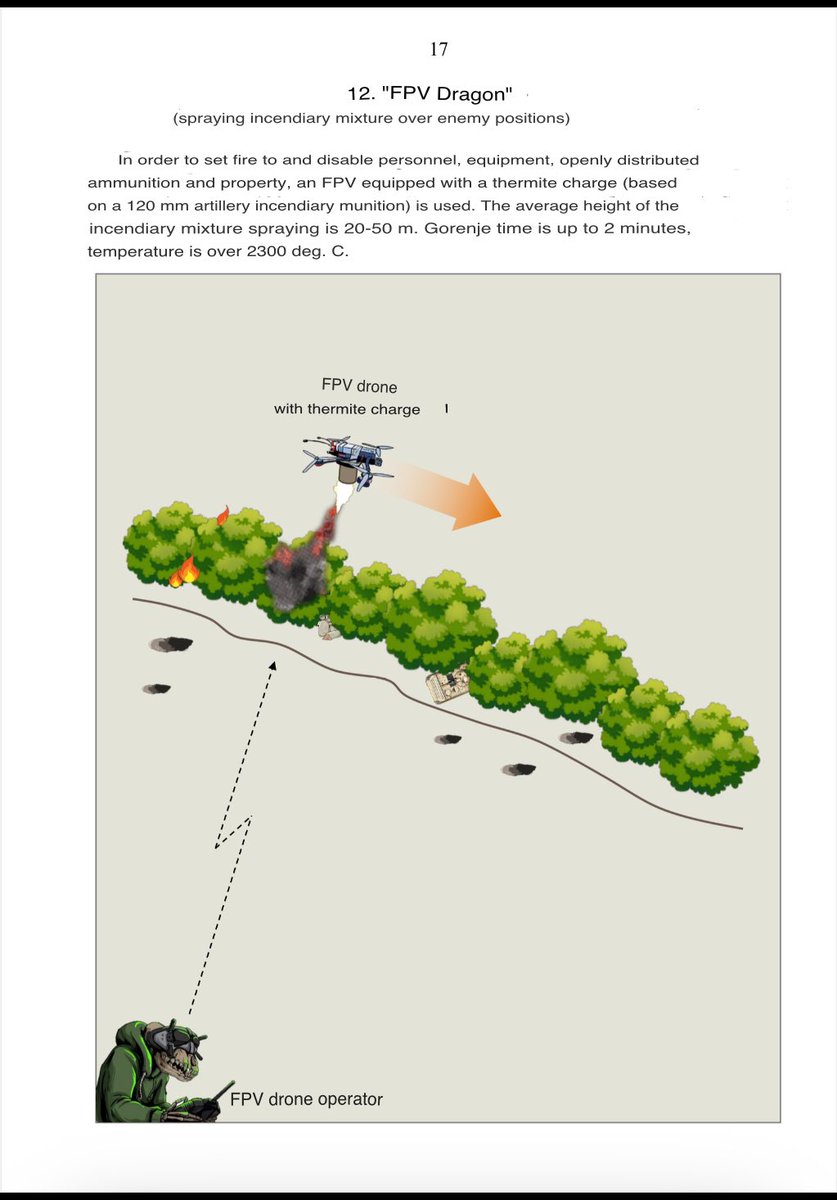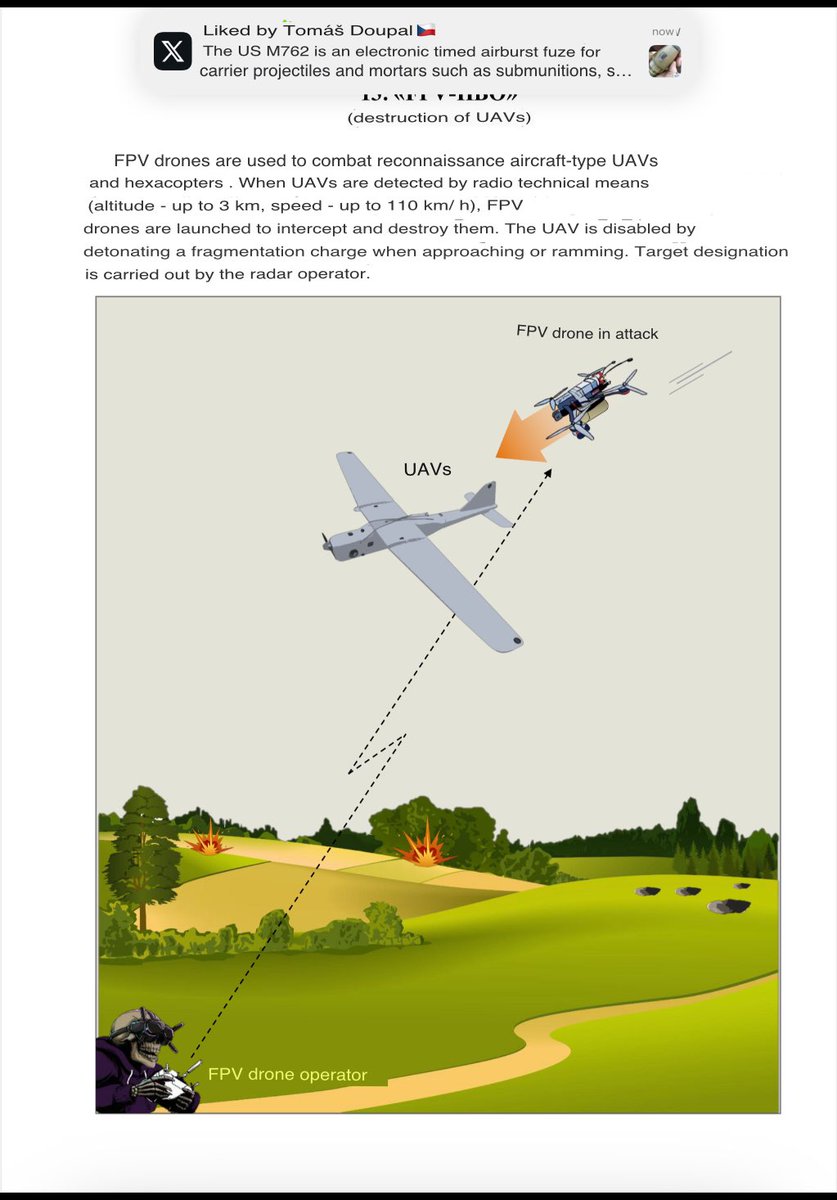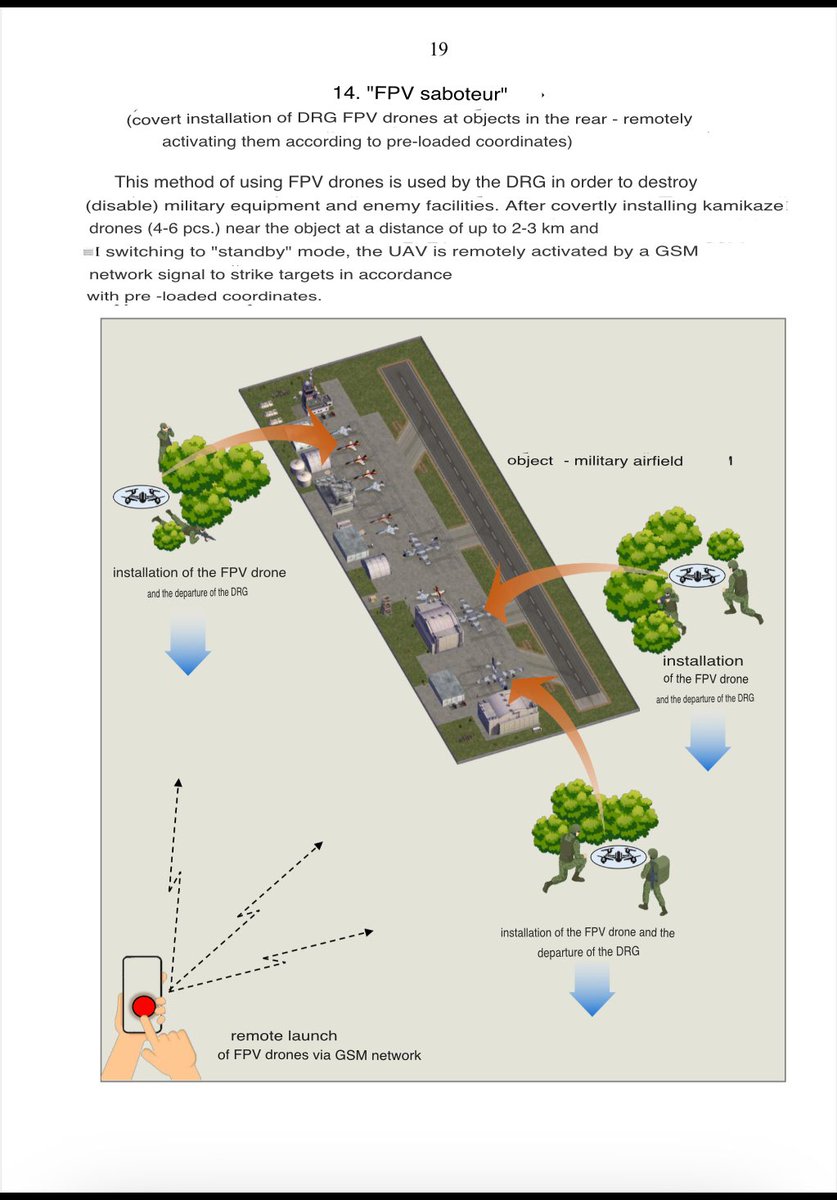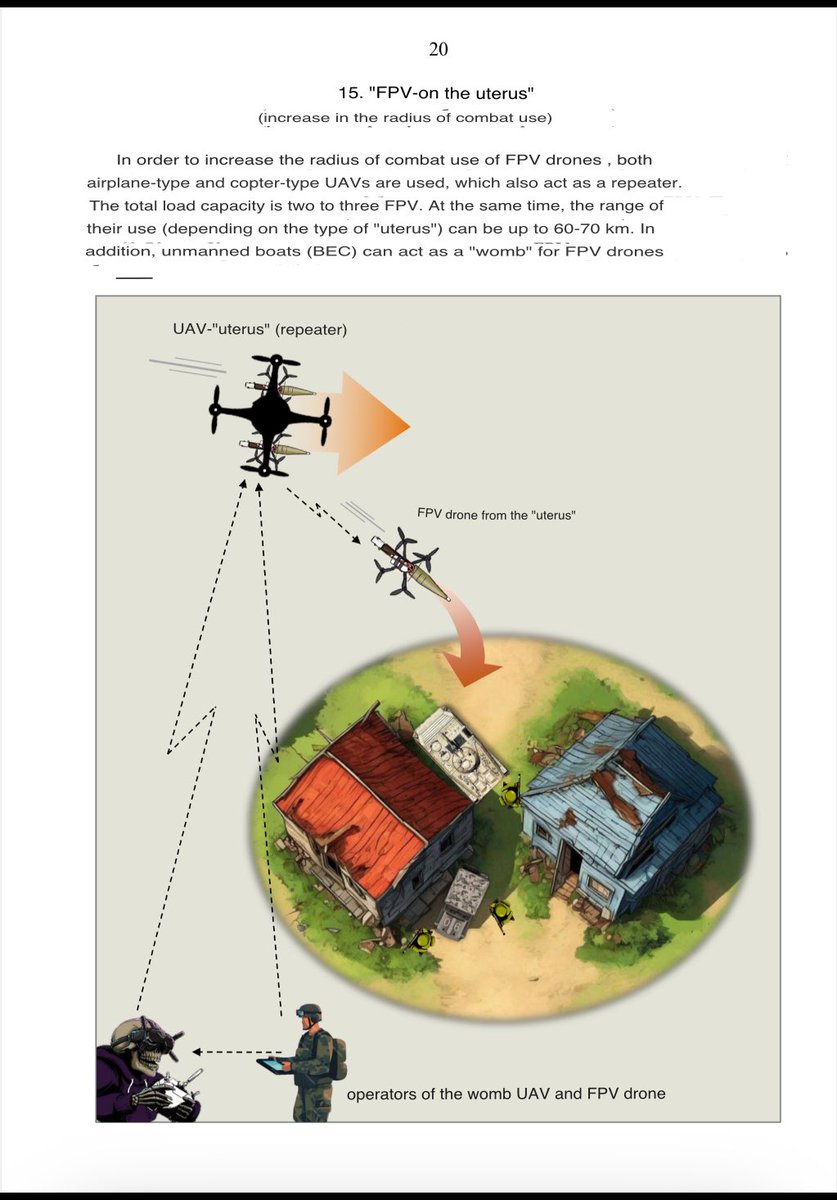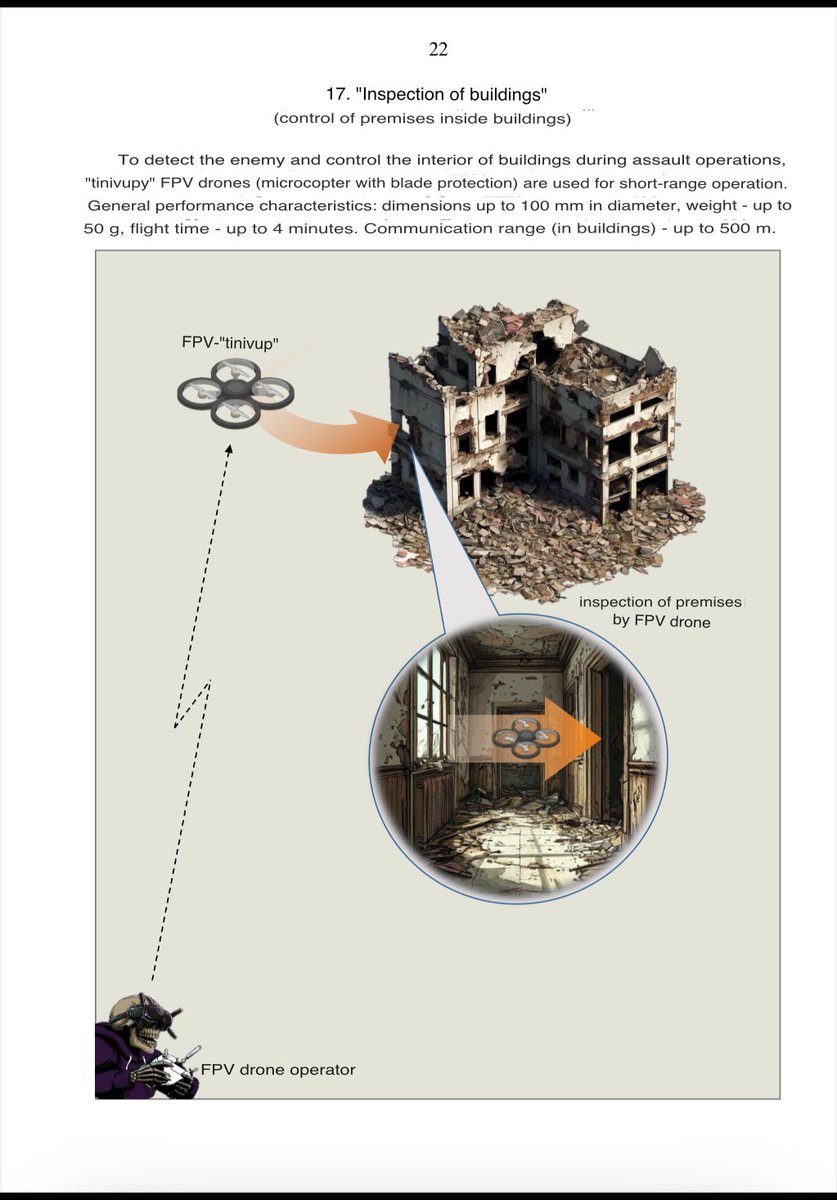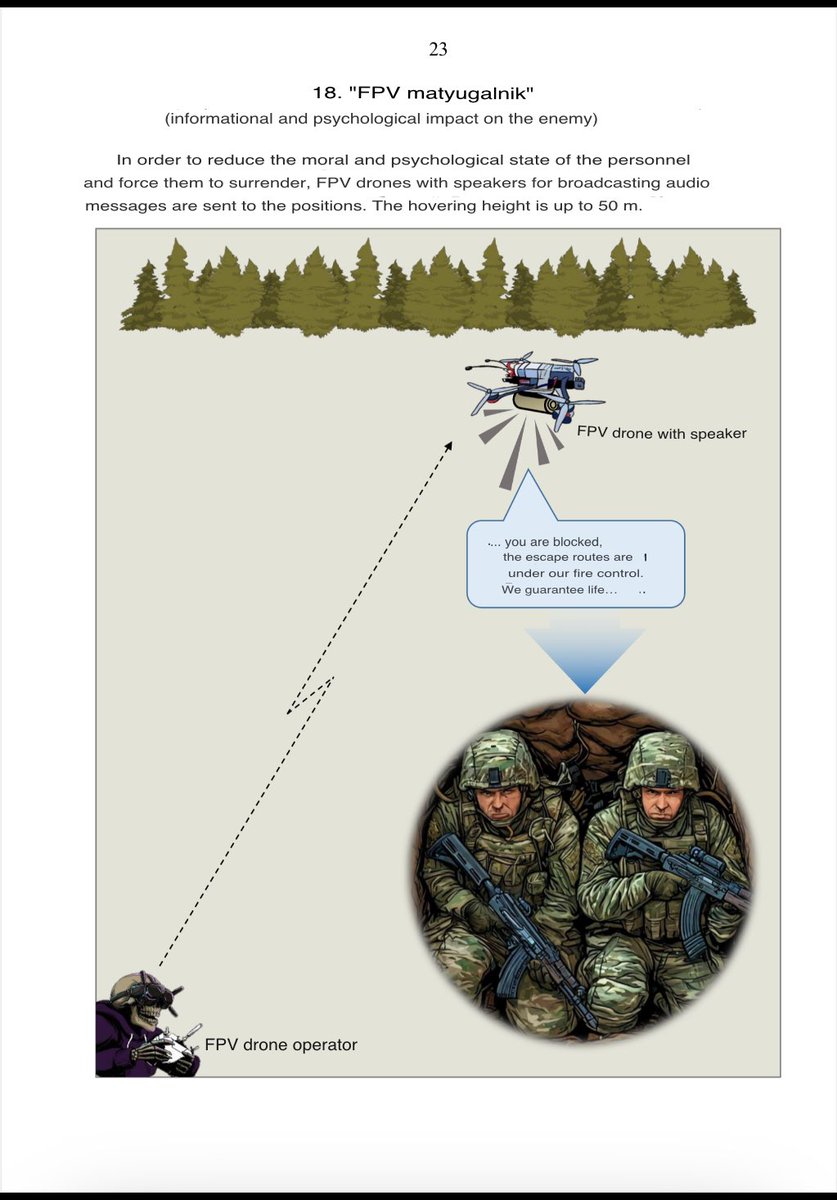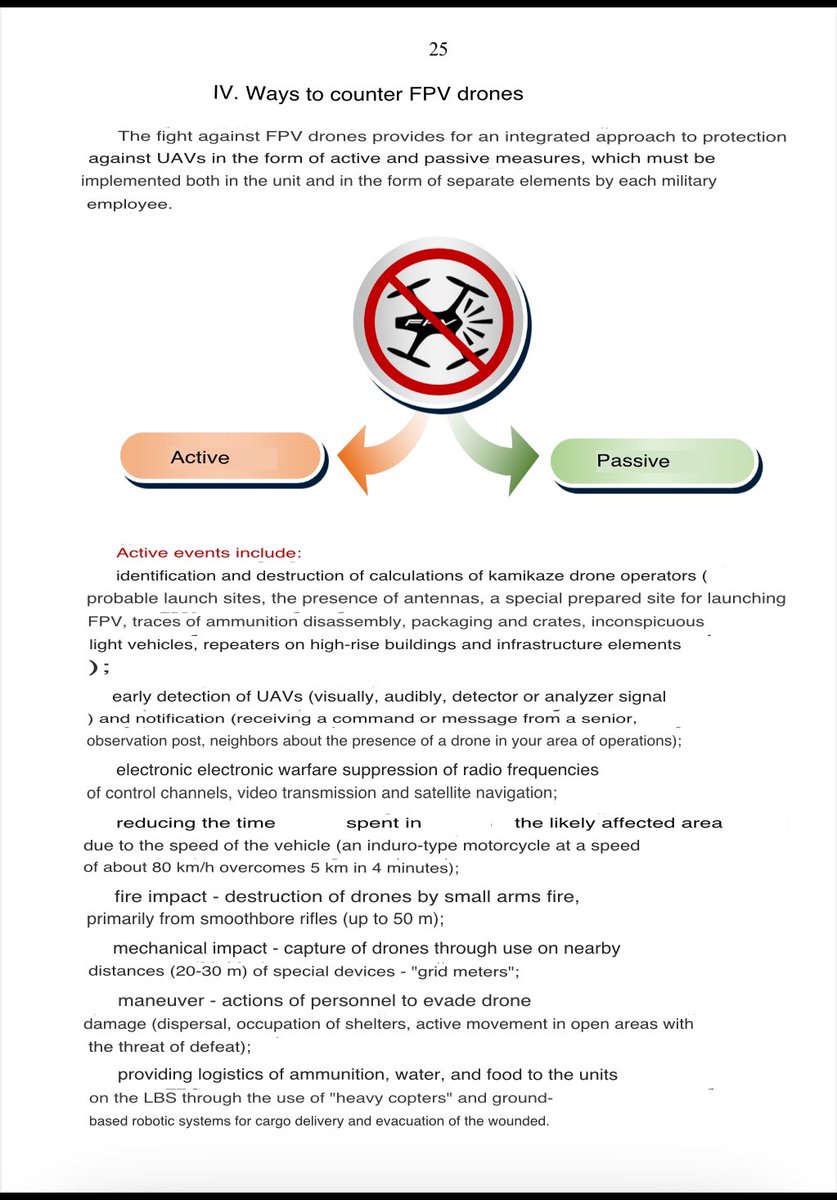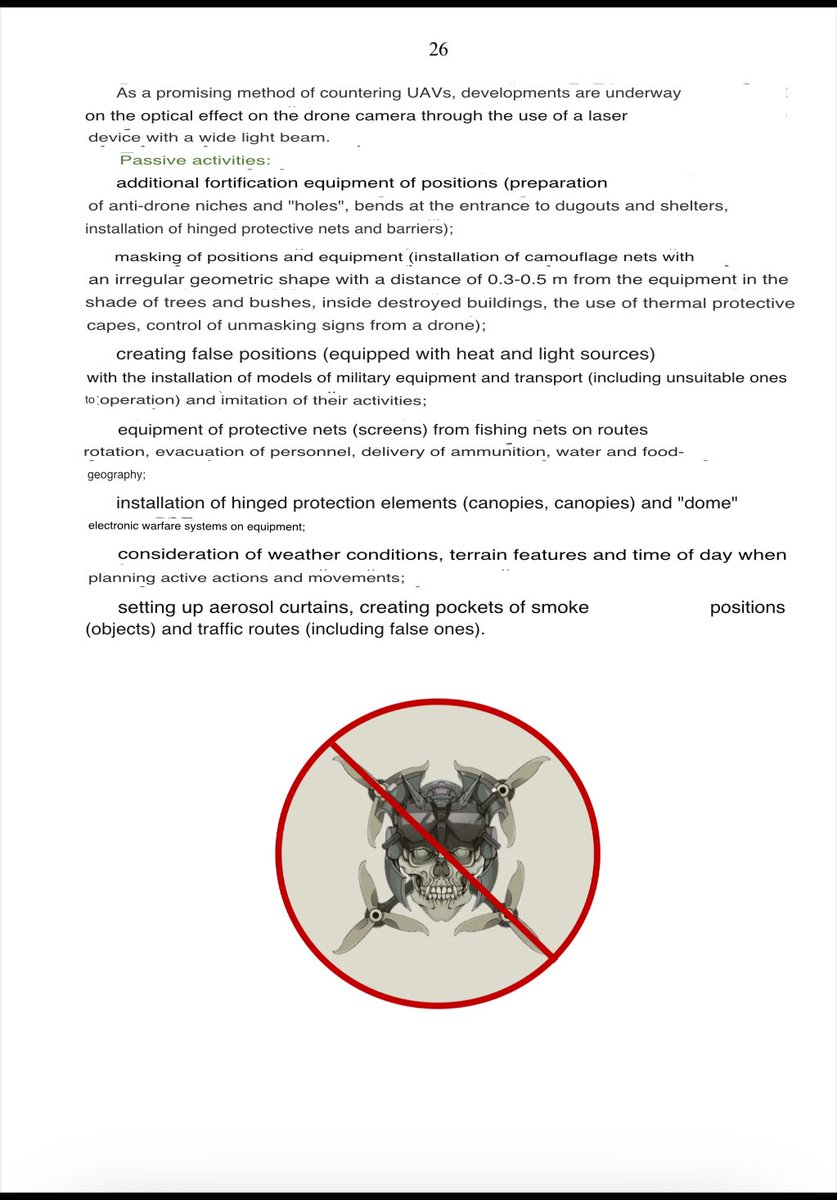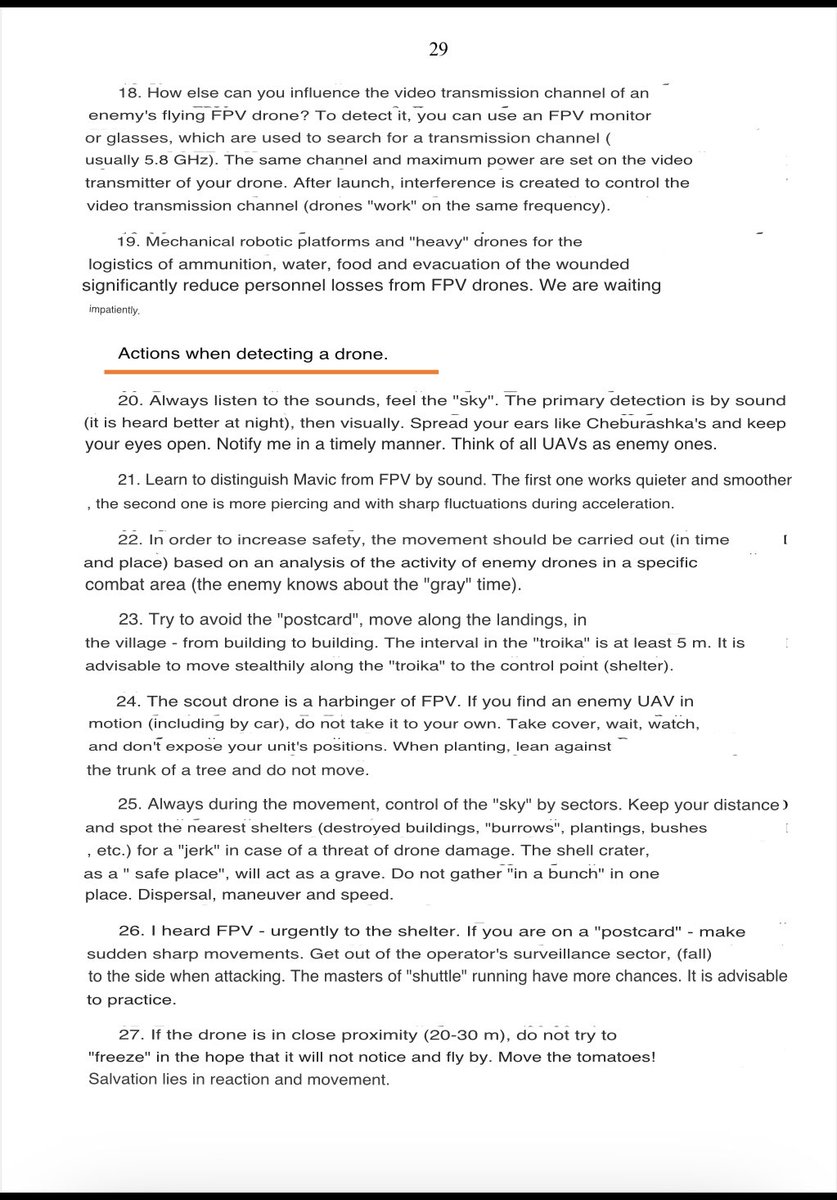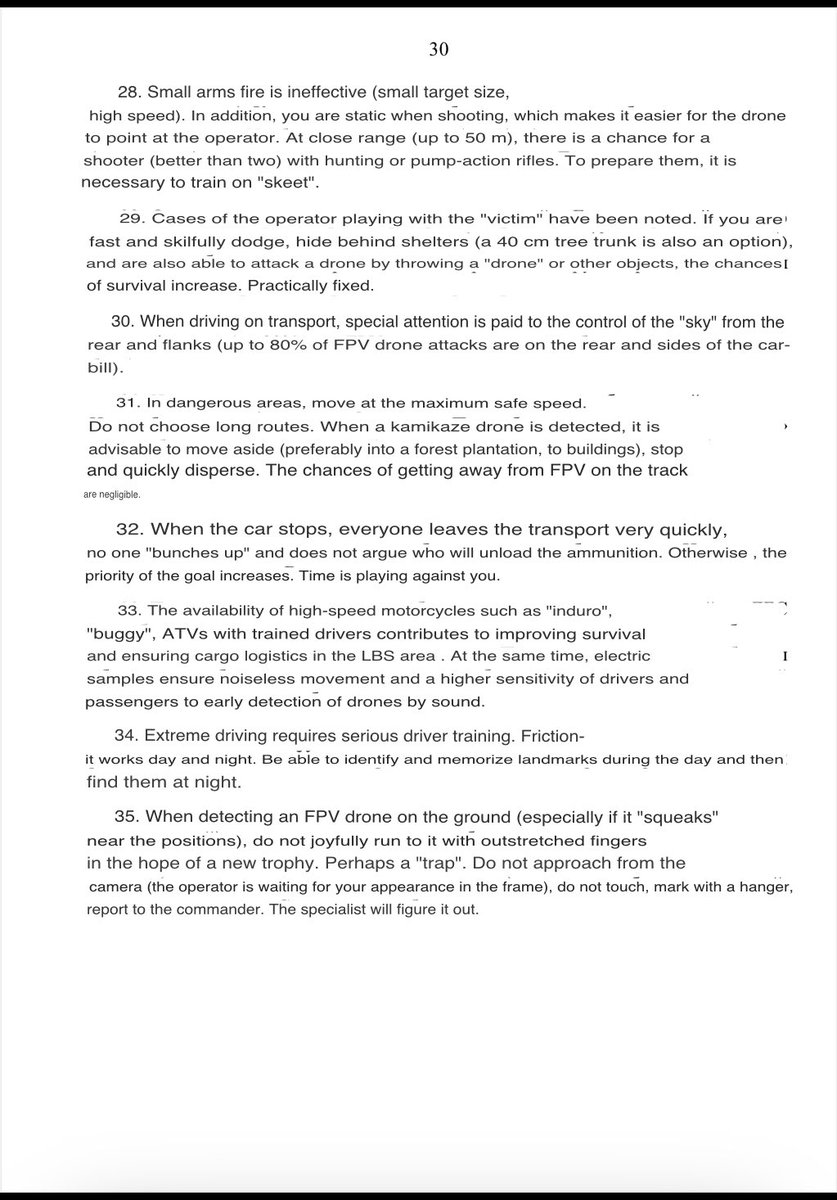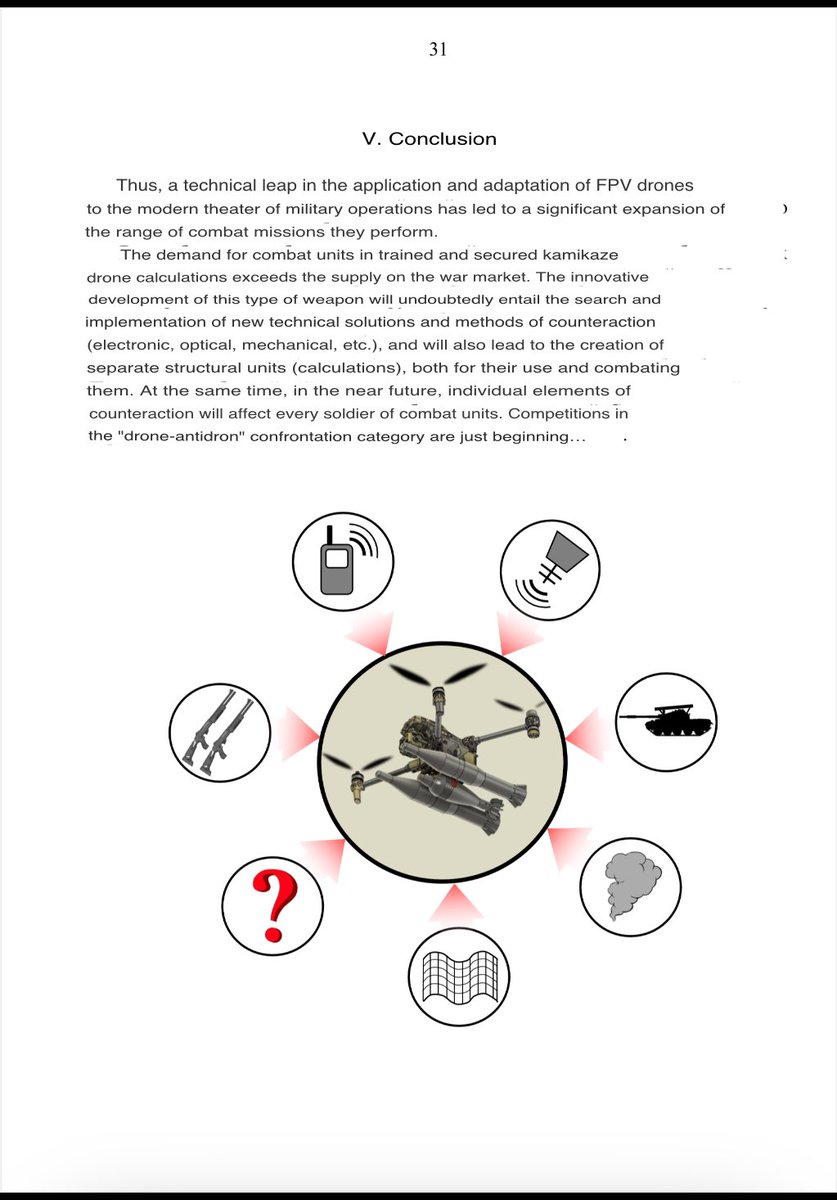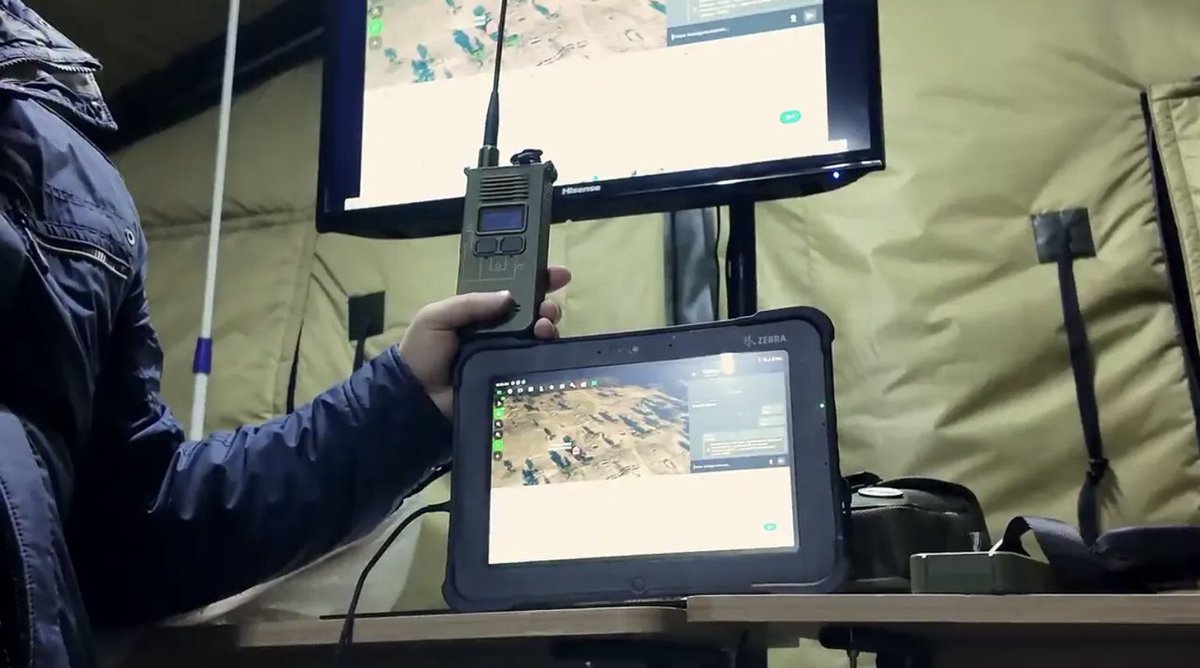Russia has published a directory of Ukrainian FPV tactics with diagrams, and suggested countermeasures.
The descriptions are basic, but the 19 separate listings are a reminder of how flexible and valuable the FPV system has become.
1/

The descriptions are basic, but the 19 separate listings are a reminder of how flexible and valuable the FPV system has become.
1/

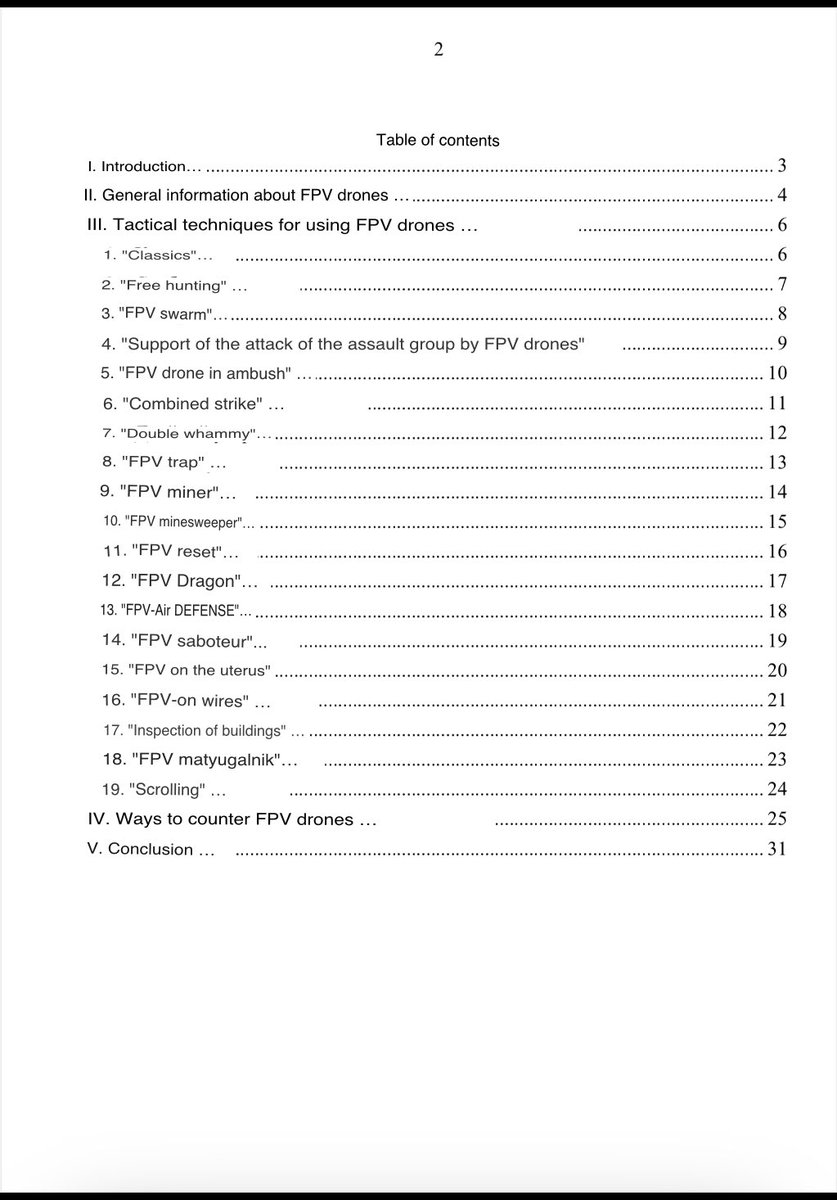
Last one.
If there’s any interest, there are some text pages of suggested countermeasures that can also be machine translated.
6/
If there’s any interest, there are some text pages of suggested countermeasures that can also be machine translated.
6/

@Ken_in_VA A Google Drive link to the Russian PDF. drive.google.com/file/d/1nwK3f6…
English PDF link! securitronlinux.com/webp/%D0%A1%D0…
• • •
Missing some Tweet in this thread? You can try to
force a refresh

